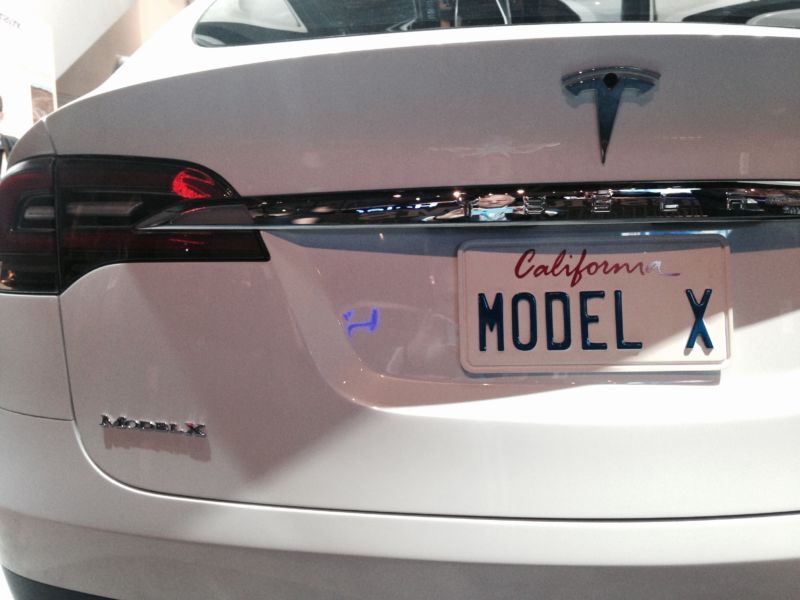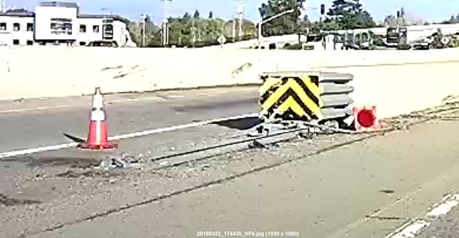Tesla says Autopilot was active during fatal crash in Mountain View
Tesla argues the data still show Autopilot makes its cars safer.
TIMOTHY B. LEE
Last week's fatal Tesla Model X crash in Mountain View, California, occurred while the vehicle had Autopilot engaged, Tesla said in a Friday blog post. "Our hearts are with the family and friends who have been affected by this tragedy," the company said. The crash claimed the life of an Apple engineer, Walter Huang, according to the Bay Area's ABC 7 News.
The vehicle ran into a concrete lane divider at high speed. The crash, and a subsequent fire, fully destroyed the front of the vehicle.
"The reason this crash was so severe is because the crash attenuator, a highway safety barrier which is designed to reduce the impact into a concrete lane divider, had been crushed in a prior accident without being replaced," according to Tesla. "We have never seen this level of damage to a Model X in any other crash."

Huang's car crashed into this lane divider.
Tesla
Huang's family has told local television station ABC 7 that, before the fatal crash, Huang had taken the vehicle into the Tesla dealership complaining about problems with Autopilot.
Tesla says it can't find any record of this, however.
"We've been doing a thorough search of our service records, and we cannot find anything suggesting that the customer ever complained to Tesla about the performance of Autopilot," a Tesla spokeswoman told Ars by email. "There was a concern raised once about navigation not working correctly, but Autopilot's performance is unrelated to navigation."
In recent years—especially since the first fatal Autopilot crash in 2016—Tesla has emphasized that Autopilot is a driver-assistance system—not a full self-driving technology. Drivers are expected to keep their hands on the wheel when Autopilot is active, and Tesla vehicles warn drivers if they take their hands off the wheel for an extended period.
"The driver had received several visual and one audible hands-on warning earlier in the drive," Tesla wrote. "The driver's hands were not detected on the wheel for six seconds prior to the collision."
Tesla said the driver had "about five seconds and 150 meters of unobstructed view" of the lane divider before the fatal crash.
Tesla-related crashes get disproportionate press coverage, but Tesla argued that Autopilot helps make Tesla vehicles safer than the average car.
"In the US, there is one automotive fatality every 86 million miles across all vehicles from all manufacturers," Tesla wrote. For Tesla vehicles equipped with Autopilot, there's been one fatality every 320 million miles, Tesla said.
The National Transportation Safety Board is investigating the crash. In addition to potential problems with the Autopilot system, the NTSB says it also plans to study the fire that resulted from the crash to learn how to best contain battery fires and safely remove a vehicle from the roadway after an accident.
No comments:
Post a Comment